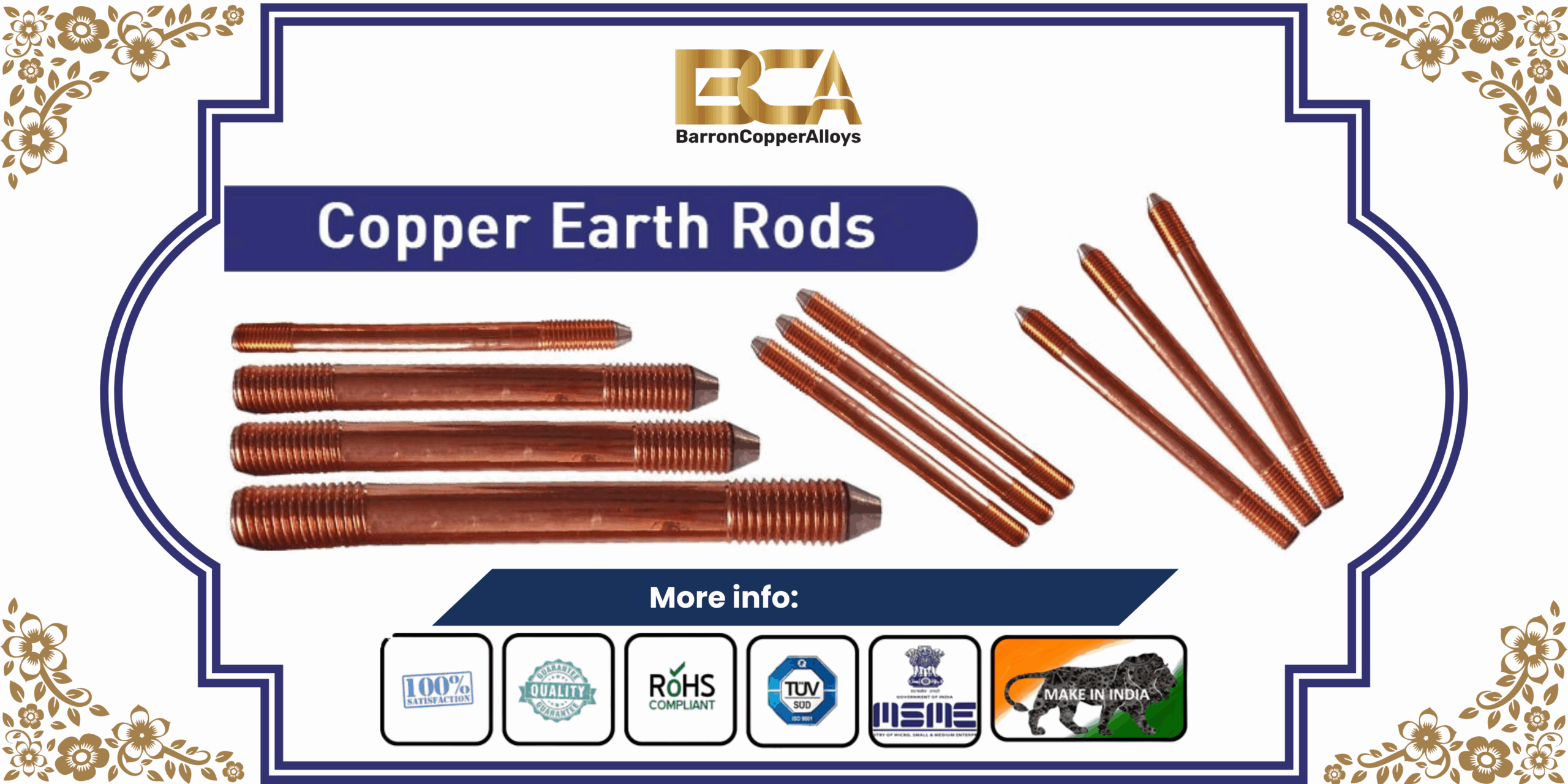Copper Earth Rods
- Home
- Copper Earth Rods

Copper Earth Rods – Overview
Copper Earth Rods are essential components in electrical earthing systems, designed to safely dissipate fault currents and static charges into the ground. They are primarily used to achieve low earth resistance and provide reliable grounding for electrical installations, ensuring safety for equipment and personnel.
These rods are typically made of high-conductivity copper or steel cores coated with a thick copper layer. The copper coating offers excellent corrosion resistance, long service life, and superior conductivity compared to bare steel rods. Copper Earth Rods are available in threaded, unthreaded, and sectional designs to suit various installation requirements.
Key Features Copper Earth Rods
-
High Conductivity: Ensures effective current dissipation.
-
Corrosion Resistance: Copper cladding protects against soil moisture and chemicals.
-
Durability: Long service life even in harsh soil conditions.
-
Versatile Use: Suitable for industrial, commercial, and residential earthing systems.
-
Standard Compliance: Manufactured as per IEC, BS, IS, or NEC standards.
Applications Copper Earth Rods
-
Electrical substation grounding
-
Lightning protection systems
-
Communication towers
-
Renewable energy installations (solar & wind)
-
Industrial plants and data centers
Copper Earth Rods – Technical Specifications
| Parameter | Specification |
|---|---|
| Material | 99.9% pure electrolytic copper or high-tensile steel core with copper bonding |
| Copper Coating Thickness | 250–300 microns (electrolytic bonded) |
| Tensile Strength | ≥ 600 N/mm² (for steel core type) |
| Conductivity | ≥ 100% IACS (copper surface) |
| Diameter Options | 12 mm, 14 mm, 16 mm, 20 mm |
| Length Options | 1.2 m, 1.5 m, 2.0 m, 2.4 m, 3.0 m |
| Rod Type | Threaded / Unthreaded / Sectional |
| Thread Type | Rolled thread (M10 / M12) – for coupling |
| Driving End | Cone-shaped or chamfered point |
| Corrosion Resistance | Excellent – suitable for varied soil conditions |
| Surface Finish | Smooth polished copper |
| Standard Compliance | IEC 62561-2, BS EN 50164-2, IS 3043, UL 467 |
| Applications | Electrical earthing, lightning protection, telecom grounding, renewable energy systems |
Copper Earth Rods – Installation Guide
1. Tools & Materials Required
-
Copper Earth Rod (threaded, unthreaded, or sectional)
-
Driving head / driving stud (to protect rod end)
-
Coupling dowels (for joining rods if extra depth is required)
-
Sledgehammer or mechanical rod driver (jackhammer with adaptor)
-
Earthing conductor (copper strip or cable)
-
Copper earth clamp (threaded or bolted type)
-
Earth resistance tester (3-point or 4-point method)
-
PPE – helmet, gloves, safety boots, safety glasses
2. Site Preparation
-
Select Location
-
Away from underground pipes, electrical cables, and building foundations.
-
Preferably in a low-resistivity, moist area for best performance.
-
-
Check Soil Conditions
-
If soil resistivity is high, consider multiple rods, sectional rods, or chemical backfill (bentonite/salt).
-
3. Installation Steps
-
Position the Rod Vertically at the marked spot.
-
Attach the Driving Head to the rod to protect the copper tip during hammering.
-
Drive the Rod into the Ground
-
Manual Method: Use a sledgehammer with steady, even blows.
-
Mechanical Method: Use a pneumatic or electric driver for deep penetration or hard soil.
-
-
Extend Depth if Required – Join additional rods using copper couplers and continue driving until the target depth is achieved (typically 2.4–3.0 m).
-
Ensure Minimum Protrusion – Leave only 100–150 mm of rod exposed above ground for connection and testing.
4. Electrical Connection
-
Clean the Exposed Rod Section – Remove any dirt or oxidation.
-
Attach Copper Clamp – Tighten firmly for secure contact.
-
Connect Earthing Conductor – Use copper cable or strip of correct cross-sectional area, ensuring copper-to-copper contact.
5. Testing & Commissioning
-
Use an earth resistance tester (fall-of-potential method) to measure resistance.
-
For most installations, target <1–5 ohms depending on regulatory standards.
-
Record readings for compliance documentation.
6. Safety Precautions
-
Always check for buried utilities before driving rods.
-
Wear appropriate PPE during installation.
-
Avoid working during thunderstorms or heavy rain.
Other Information
✔️ Sample Time: Available in 5-10 days for different items.
✔️ Drawing Format: CAD / PDF / DWG / IGS / STEP.
✔️ Packaging: Standard package, Carton box or Pallet, As per customized specifications
✔️ Shipping: DHL, FEDEX, UPS and By Sea or as per client’s requirements.

